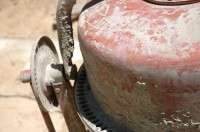Researchers to develop 'green' cement from rice husks

(PhysOrg.com) -- Researchers from the Universities of Bath and Dundee are working with collaborators in India to develop environmentally-friendly cement using waste materials such as rice husks.
The researchers have been working as part of a UK-India Education & Research Initiative (UKIERI) project, led by the University of Dundee, on how to reduce the carbon footprint of cement, which contributes to around five per cent of global CO2 emissions.
Portland cement, a major constituent of concrete, is made by heating limestone with clay at high temperatures, a process that produces approximately one tonne of carbon dioxide for every tonne of cement made.
The researchers are looking into ways of reducing this carbon footprint by replacing part of the Portland cement with waste materials such as fly ash from burning coal, slag from iron works and even rice husks.
Dr Kevin Paine, from the University of Bath’s Department of Architecture & Civil Engineering, and Dr Moray Newlands and Professor Ravinder Dhir, from the Concrete Technology Unit at Dundee have recently returned from a UKIERI meeting in Punjab, India, where they presented their latest research and shared ideas with colleagues to develop new types of cement with a lower carbon footprint.
Dr Paine explained: “Concrete is the second most used material in the world after water, and so reducing the CO2 emissions produced by it could make a real difference to climate change.
“India’s infrastructure is developing rapidly and it is the second largest producer of cement in the world, after China. Therefore this collaboration with Indian research institutes is developing the new technologies in the countries where it’s most needed.
“There’s no single perfect replacement for Portland cement - instead we are looking into a number of ‘green’ cements that use different waste materials depending on what is locally available. For example, in India you might burn rice husks to make silica to mix with the cement; in the UK you might use fly ash made from burning coal.”
Dr Newlands added: “The scale of the problem facing infrastructure development in India and the UK means that collaboration between a number of institutions is the only way to reach our goals. We have to look at the environmental challenges collectively to make a meaningful impact.”
Dundee’s Concrete Technology Unit conducts fundamental and applied, multi-disciplinary research to assist the concrete construction industry in becoming more innovative, competitive and environmentally-sustainable.
Dr Paine worked at the Unit before moving to Bath in 2007. He continues to collaborate with colleagues at Dundee, testing the durability of concrete made with different cements under a range of environmental conditions.
The two universities are planning to host undergraduate students from India this summer as part of the continuing UKIERI collaboration.
Provided by University of Bath